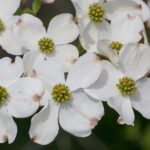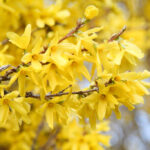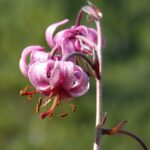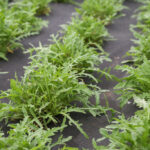Diseases and pests of forsythia
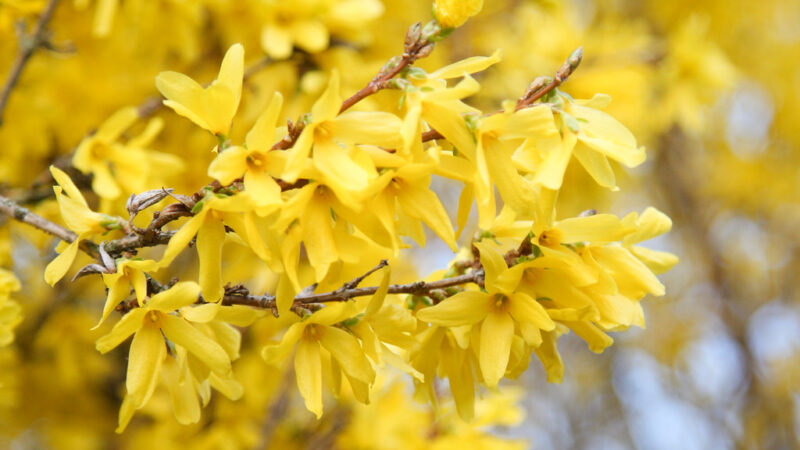
Forsythia is celebrated in the gardening world for its robust nature and general resistance to many of the common ailments that plague other landscape shrubs. This resilience makes it a wonderfully low-maintenance option for many gardeners. However, no plant is entirely immune to problems, and under certain conditions, forsythia can be susceptible to a handful of specific diseases and pests. Being able to identify these potential issues early is the key to effective management and to ensuring that minor problems do not escalate into threats to the plant’s health and vitality. A proactive approach, focused on good cultural practices, is always the best defense.
The vast majority of forsythia problems are related to environmental stress or poor cultivation practices rather than infectious diseases or rampant pests. Issues such as inadequate sunlight, waterlogged soil, or improper pruning can weaken the plant, making it more vulnerable to secondary infections or infestations. Therefore, the first line of defense is always to provide the plant with its preferred growing conditions: full sun, well-drained soil, and good air circulation. A healthy, vigorous plant is naturally better equipped to ward off potential threats on its own.
When diseases do occur, they are often fungal in nature, such as leaf spot, which can mar the appearance of the foliage but is rarely fatal. Bacterial diseases like crown gall are more serious but less common. Understanding the difference between these pathogens and the conditions that favor them will help you implement the correct control strategies. Often, simple changes in watering habits or a thorough autumn cleanup can significantly reduce the incidence of disease in the following season.
Similarly, while forsythia does not attract a wide array of insect pests, it can occasionally host sap-sucking insects like aphids or spider mites. These pests are typically more of a nuisance than a serious threat and can often be managed with simple, non-chemical methods. By familiarizing yourself with the common diseases and pests of forsythia, you can maintain your shrub’s health and ensure it continues to be a vibrant, trouble-free asset in your garden landscape.
Fungal diseases and their management
Among the potential diseases that can affect forsythia, fungal infections are the most common, though they are rarely severe. The most frequently encountered issue is leaf spot, caused by various fungi that thrive in damp conditions. This disease manifests as small, dark-brown or black spots on the leaves, which may sometimes be surrounded by a yellow halo. While visually unappealing, leaf spot typically does not cause significant harm to the overall health of the shrub. However, a severe infection can lead to premature defoliation, which can weaken the plant over time.
More articles on this topic
The key to managing fungal diseases like leaf spot lies in prevention through good cultural practices. Since these fungi flourish in moist environments, it is crucial to promote good air circulation through and around the shrub. This can be achieved by giving the plant adequate space when planting and by selectively pruning out some of the older, thicker stems to open up the center of the plant. Furthermore, always water forsythia at the base, using a soaker hose or drip irrigation, to keep the foliage as dry as possible. Overhead watering creates the ideal conditions for fungal spores to germinate and spread.
Another fungal issue, though less common, is anthracnose, which can cause larger, more irregular blotches on the leaves and cankers on the stems. Good sanitation is a critical control measure for all fungal diseases. In the autumn, after the leaves have fallen, it is important to rake them up and either burn them or dispose of them in the trash. Do not add diseased leaves to your compost pile, as the fungal spores can survive and be reintroduced to the garden later. Pruning out any branches that show signs of cankers can also help to limit the spread of the disease.
In most cases, chemical intervention with fungicides is not necessary for controlling leaf spot on forsythia. By focusing on cultural controls—improving air circulation, watering properly, and practicing good garden hygiene—you can effectively keep these fungal issues in check. A healthy, well-cared-for plant in the right location will have a strong immune system and will be much less likely to succumb to significant fungal problems, allowing you to enjoy its beautiful foliage throughout the growing season.
Bacterial infections to watch for
Bacterial diseases are generally more serious than fungal ones for forsythia, although they are thankfully much less common. The most significant bacterial threat is crown gall, caused by the soil-borne bacterium Agrobacterium tumefaciens. This disease leads to the formation of rough, woody, tumor-like growths, known as galls, on the plant’s roots and on the stem near the soil line. These galls disrupt the flow of water and nutrients through the plant’s vascular system, which can result in stunted growth, yellowing leaves, and a general decline in vigor.
More articles on this topic
The bacteria that cause crown gall enter the plant through wounds. These wounds can be created by mechanical injury from lawnmowers or string trimmers, damage from chewing insects, or even natural cracks in the bark. Therefore, prevention is paramount, as there is no chemical cure for crown gall once a plant is infected. Be extremely careful when cultivating or working around the base of your forsythia to avoid injuring the bark or roots. Sourcing plants from reputable nurseries also reduces the risk of introducing the bacterium to your garden on contaminated stock.
If you discover a forsythia with crown gall, the prognosis is unfortunately poor. For small, isolated galls on a single stem, you may be able to prune out the affected branch, sterilizing your pruning tools with a bleach solution between each cut. However, if the galls are on the main trunk or the root crown, the plant is unlikely to recover and should be removed and destroyed to prevent the spread of the bacteria in the soil. Do not plant another susceptible species, including forsythia, roses, or fruit trees, in that same location for at least two years.
Another, albeit very rare, bacterial issue is leaf scorch, which can cause the edges of the leaves to look burnt and dry. This is often caused by bacteria that clog the plant’s water-conducting tissues. However, similar symptoms are more commonly caused by environmental factors like drought stress or windburn. If you suspect a bacterial infection, it’s always best to get a definitive diagnosis from a local agricultural extension service before taking drastic measures like removing the plant.
Common insect pests on forsythia
Forsythia is not a primary target for most garden pests, but it can occasionally host a few common insects. Aphids are small, pear-shaped, sap-sucking insects that tend to congregate on the tender new growth and undersides of leaves. A small infestation is usually not a cause for concern, but a large population can cause leaves to curl and become distorted. Aphids also excrete a sticky substance called honeydew, which can lead to the growth of sooty mold, a black fungus that, while harmless, is unsightly.
Managing aphids on forsythia is typically straightforward and does not require harsh chemicals. Often, a strong jet of water from a garden hose is enough to dislodge and kill many of the insects. For more persistent infestations, insecticidal soap or horticultural oil can be effective and are low-impact options that are safer for beneficial insects. Encouraging natural predators like ladybugs, lacewings, and hoverflies into your garden by planting a diversity of flowering plants will also provide excellent long-term, natural aphid control.
Spider mites are another potential pest, particularly in hot, dry weather. These tiny arachnids are difficult to see with the naked eye, but their presence is often revealed by a stippling pattern on the leaves (tiny yellow or white dots) and fine webbing on the undersides of leaves and between stems. Like aphids, they feed by sucking plant juices, which can cause leaves to look faded and unhealthy. Increasing the humidity around the plant by hosing it down can help deter spider mites, as they thrive in dry conditions.
Occasionally, you might find other pests such as scale insects, which appear as small bumps on the stems, or four-lined plant bugs, which cause small, sunken spots on the leaves. In almost all cases, these pests cause only cosmetic damage to a healthy forsythia. The best approach is to monitor your plants regularly and address any infestations early before they become widespread. A resilient, well-cared-for shrub will almost always tolerate minor pest activity without any significant impact on its overall health or flowering display.
Environmental and abiotic problems
Often, when a forsythia appears unhealthy, the culprit is not a disease or a pest, but an environmental or abiotic issue. These are problems caused by non-living factors, such as improper growing conditions or weather-related stress. For example, one of the most common complaints about forsythia is a lack of flowers. This is frequently due to a lack of sunlight, as forsythia needs at least six hours of direct sun to bloom profusely. Another common cause is pruning at the wrong time of year; pruning in late summer, fall, or winter removes the flower buds that have already formed for the following spring.
Soil-related issues are another major source of abiotic problems. Forsythia planted in heavy, waterlogged clay soil is prone to root rot, a condition where the roots are deprived of oxygen and begin to decay. Symptoms of root rot above ground include wilting, yellowing leaves, and branch dieback. The only solution is to improve the soil drainage or, in severe cases, to transplant the shrub to a more suitable location with better-draining soil. This underscores the importance of proper site selection and soil preparation before planting.
Weather can also cause damage to forsythia. A late, hard frost in the spring can damage or kill the open flower buds, resulting in a poor or nonexistent floral display for that year. While you cannot control the weather, you can avoid stimulating early growth by not fertilizing too early in the spring. In regions with very harsh winters, some less-hardy varieties of forsythia may experience dieback on the tips of their branches. This is usually just cosmetic damage that can be easily pruned out in the spring after the plant has leafed out.
Ultimately, preventing abiotic problems comes down to providing the plant with the right care in the right place. By ensuring your forsythia has plenty of sun, excellent drainage, and is pruned at the correct time, you will eliminate the vast majority of potential issues. When you see a symptom, always consider these fundamental cultural factors first before assuming you are dealing with a complex disease or a stubborn pest. A simple adjustment to your care routine is often all that is needed to resolve the problem.
📷 Flickr / Szerző: Maja Dumat / Licence: CC BY 2.0









